Seed treatment with fungicides
Care required with the sanitary quality of seeds, whose chemical treatment with fungicides plays a fundamental role in preventing diseases in crops
We often hear that “crises generate solutions”. Nothing more appropriate to what we experienced in Pirajuba, Minas Gerais, when we went to test the Organic Waste Composter model CRO 5.0, from Civemasa.
Composting is a very old biological process for recycling and treating organic waste that uses an aerobic route. Therefore, it aims to reduce the amount of waste produced and, consequently, reduce environmental contamination.
Nowadays, large-scale composting is a process that is seeing increasing adoption, especially in the last four or five years, driven by two major problems. The first is the disposal of waste from different stages of production within agricultural systems. The second is characterized by high prices and the unavailability of raw materials for the production of traditional commercial fertilizers.
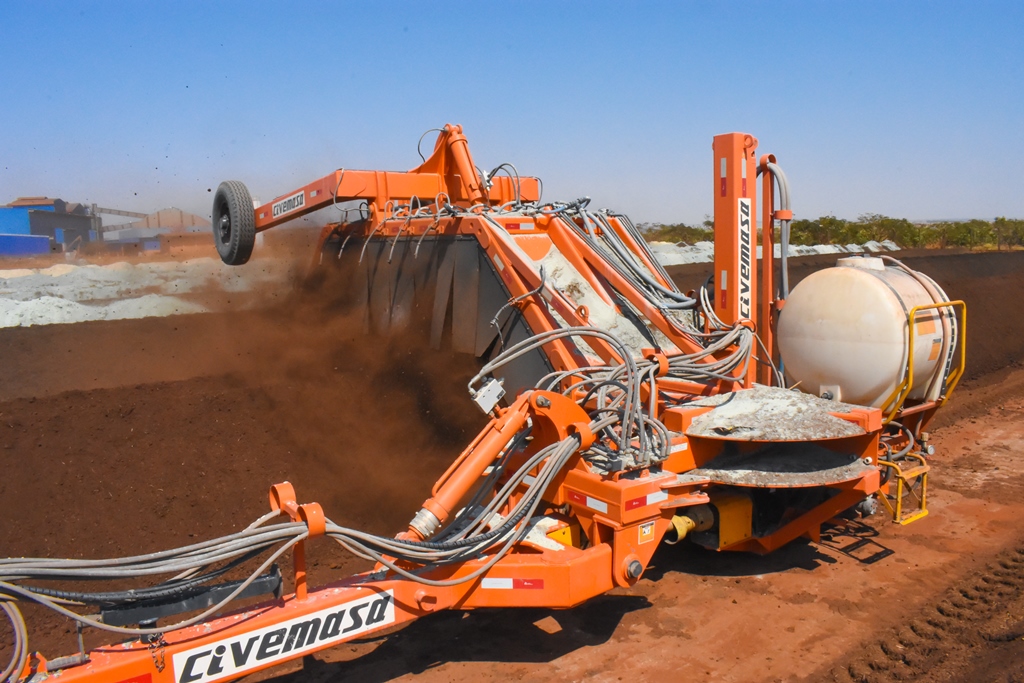
In this way, several associative and cooperative networks are emerging, both for the supply of the raw material used in composting and carrying out the processes inherent to the preparation of compost, and for its direct use as fertilizer or corrective. Therefore, sugarcane mills, with their residues such as filter cake, vinasse and bagacinho, can be suppliers of the raw material, as can coffee farming and intensive livestock farming, both confinement for meat production as well as for milk production, as well as waste from poultry farms and pig farms.
The composting process at this level of intensity takes on aspects of industrialization with highly organized phases and stages that depend on rigorous technical analysis. Throughout the process, the raw material goes through stages of maturation and addition of enrichment components, in order to correct and reduce certain imbalances or nutritional deficiencies of potassium, phosphorus, calcium and micronutrients, for example.
This entire process takes place in a place called a composting yard, which is generally located as close as possible to the waste generation and collection centers. The material that arrives at the composting yard is raked by trucks and transport machines. The layout of the yard and the way of working follow the standard determined by consultancy companies specialized in this topic, companies that are increasingly present in the country in recent years.
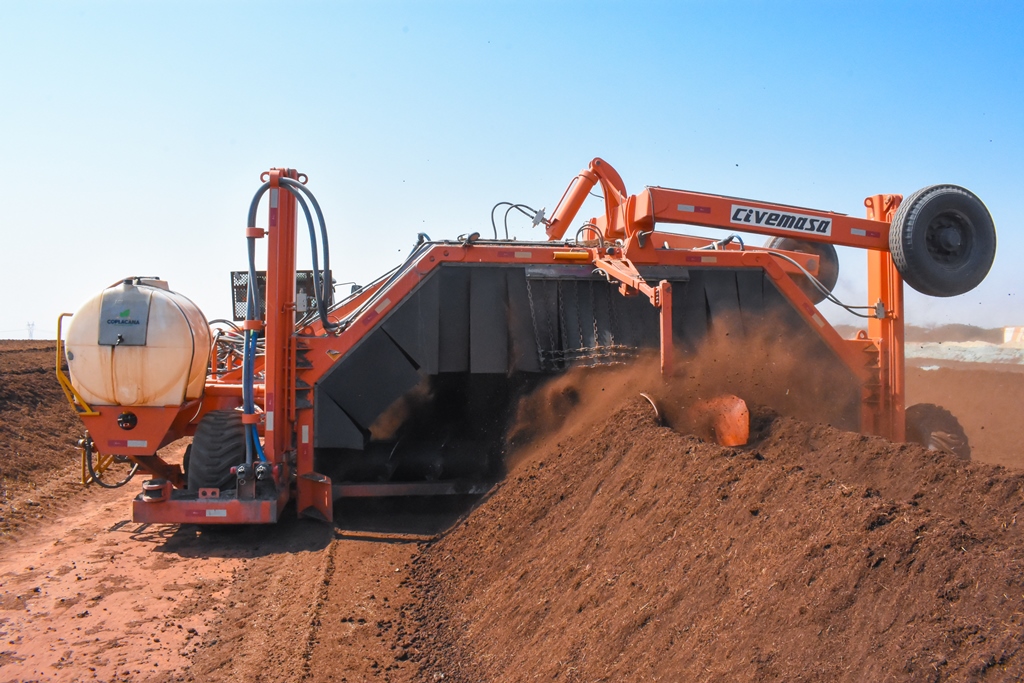
Given what we observed in Pirajuba, the execution of a good compound is dependent on the quality of the consultancy provided and the technical analysis of the modifications to the compound throughout the process. Furthermore, it is related to the mechanized work of moving the mass of waste, which changes over time. The aeration process is vitally important for microorganisms that decompose organic waste. Since decomposition is a process of biological oxidation of carbon-rich molecules, releasing energy that is consumed by organisms. Therefore, the simple addition of rock powder to correct deficiencies in mineral components is not enough, as the product is a living matter dependent on the action of microorganisms that must be monitored almost daily. Furthermore, care must be taken with humidity, temperature, C/N ratio, particle size and presence of seeds, pathogens or heavy metals.
Although there is no basic or generalized recipe for the composting process, the completion of the compost, about to be applied to crops, takes four to six months. And the work of the organic waste composting machine, model CRO 5.0, from Civemasa, encompasses four to six interventions, known in the field and in practice as beats.
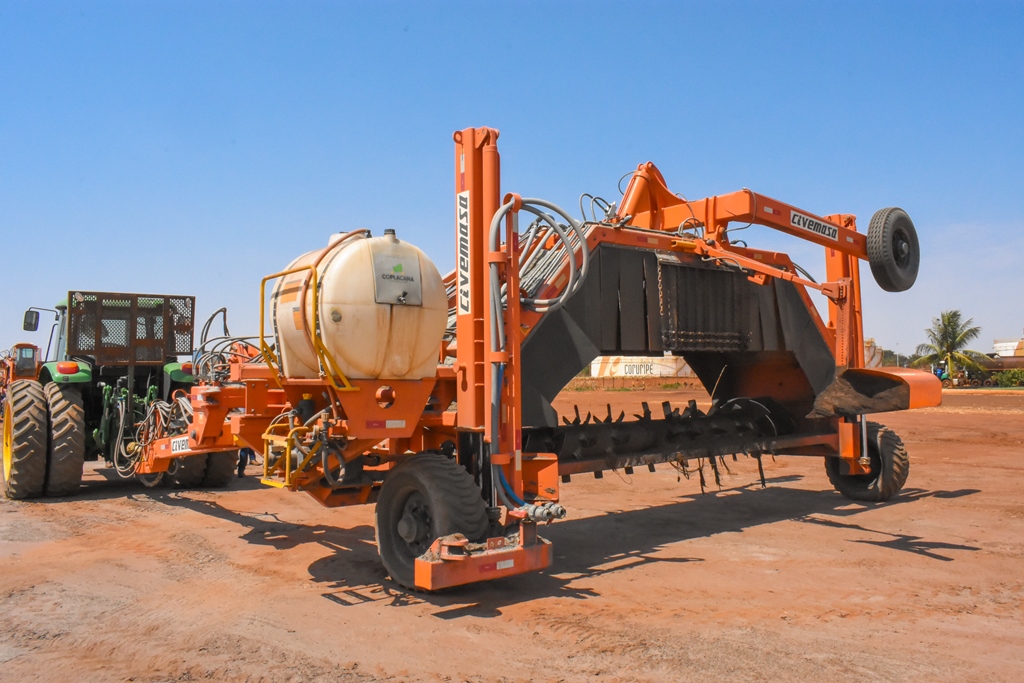
This entire process, which intensified during the mineral fertilizer supply crisis, is based on two main points, the need to promote the legal and ecological disposal of waste, in favor of the sustainability of the system, and the need to produce an efficient fertilizer that can be applied individually or together with mineral fertilizers in common and traditional use.
However, it is important to consider the particularities of the system, which range from the logistics of receiving the raw material, processing and final transportation to the fertilizer application site, as well as the availability of equipment.
For application, Civemasa has solutions in the form of five models of fertilizer distributors. Therefore, equipment is available that can be used throughout the cycle, from the production of organic compost to its application in the field.
During the visit to the composting yard of Brunozzi Agropecuária, based in Pirajuba, state of Minas Gerais, we observed several phases of the composting process, starting with the deposit of the material in windrows, some of them in different stages of preparation, including in the final stage composition, and being transported to the application.
Brunozzi Agropecuária is a company founded in 2015 that produces meat, sugar cane and soy, using advanced organic fertilization systems. The use of the product from composting in the agricultural production system made it possible to reduce chemical fertilizers by approximately 70%, which, combined with the direct planting of soybeans on brachiaria straw, yields high productivity for the system.
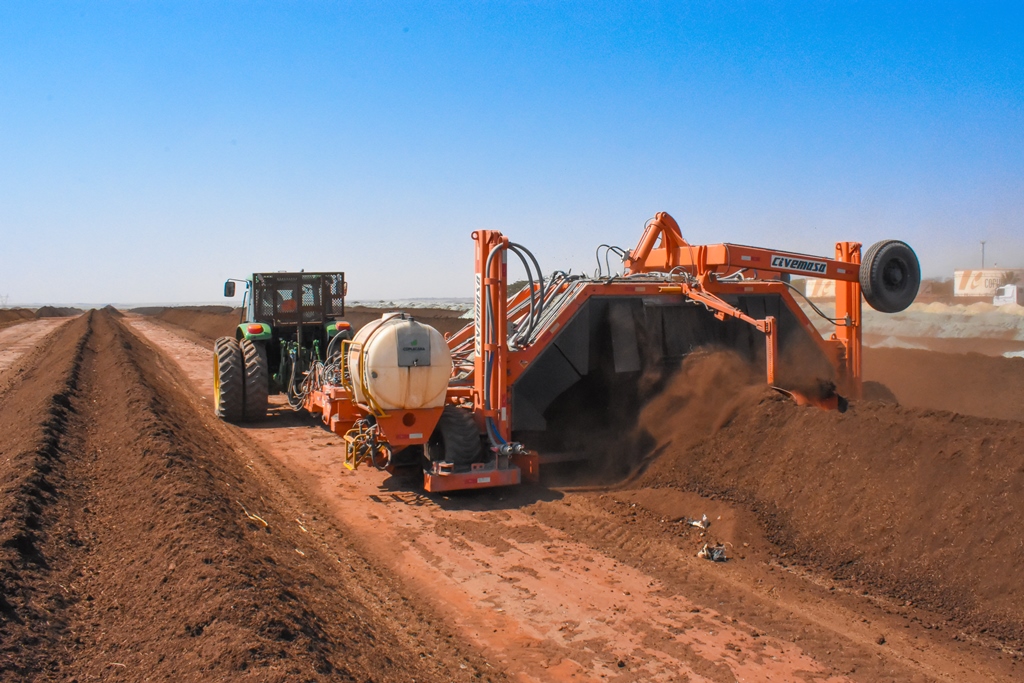
The CRO 5.0 composter is a product of the evolution and improvement of other previous commercial models of the Civemasa brand, which has been manufacturing similar products since 1993. In turn, Civemasa is a traditional company in the state of São Paulo, producing agricultural machinery and implements , initially focused on the cultivation of sugar cane and later with a line of products for all agricultural crops. Since 1999, it has been an individual brand within the Marchesan Group.
To face the global ecological problem of treating waste and transforming it into fertilizer, Civemasa developed the CRO 5.0 composter, in order to standardize and technify the traditional composting process, transforming it into an almost industrial method.
The CRO 5.0 composter is considered a fertilizer biofactory. Firstly, it carries out the process of fragmenting the material, which comes in the form of lumps and solid parts, homogenizing it. Furthermore, it promotes aeration by lifting material from the windrows. It also standardizes measurements during the windrow formation stage, providing a more uniform appearance. As an important function of the machine, it can add other materials to the windrow, liquids, through its tank or by coupling a fire truck.
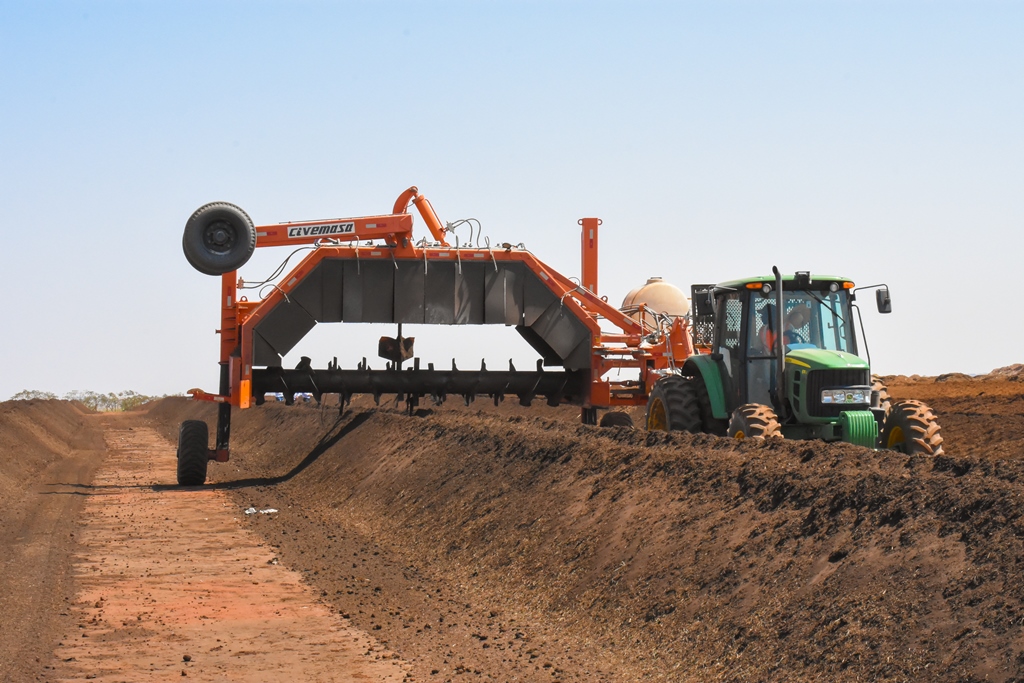
Launched in 2022 at Agrishow in Ribeirão Preto (SP), the organic waste composter, model CRO, comes in two models, the CRO 4.0, four meters wide and volumetric capacity of 3,45m³ per linear meter of windrow and average yield of 690m³ per hour, and the CRO 5.0 model that we tested in the field, with five meters of working width and volumetric capacity of 6,35m³ per linear meter of windrow and average yield of 1.270m³ per hour. The great advantages of this new launch are the greater production capacity compared to the smaller model and the larger size of the gantry. Due to these differences in characteristics and dimensions, the CRO 4.0 model is recommended for projects that process up to ten thousand tons/semester, while for higher processing projects the CRO 5.0 is recommended, mainly for large projects or associative forms of work. In addition to these two composters available in Civemasa's product portfolio, there is a new, smaller model about to be launched.
The equipment consists of a structure in the form of a gantry, with a lateral coupling. Thus, the tractor that pulls and drives the equipment passes between two compost windrows, and the equipment works on the windrow. It uses a rotor transverse to the displacement line, which works at a horizontal level and allows the height of the rotor to be adjusted, from 30cm to two meters above the ground, according to the purpose you want to achieve. As the weight of the equipment is different on one side and the other, a gear flow divider valve was placed so that the equipment rises in a balanced way on both sides at the same time.
In general, the working height of the rotor is half the height of the windrow, however, sometimes it is necessary to work on inverting the position of the layers or just mobilizing the upper surface. This adjustment of the height position is done by means of two hydraulically controlled vertical pistons from the tractor's operating station. Still regarding the rotor, the manufacturer's engineering and marketing team explained to us that it is dynamically balanced in order to reduce vibrations during action on the windrow. It is even recommended that when there is a need to replace blades or knives, the entire kit should be replaced, to prevent the set from becoming unbalanced.
The CRO 5.0 composter has the possibility of carrying out relative movement between the gantry and the hitch, articulating for transport on short distances or on a plank for mobility. To put the equipment in transport mode, a component called a “wheel”, which is a support for the transport wheels and placed in the upper part of the gantry, is activated and suspends the composter on tires dedicated only for this transport operation.
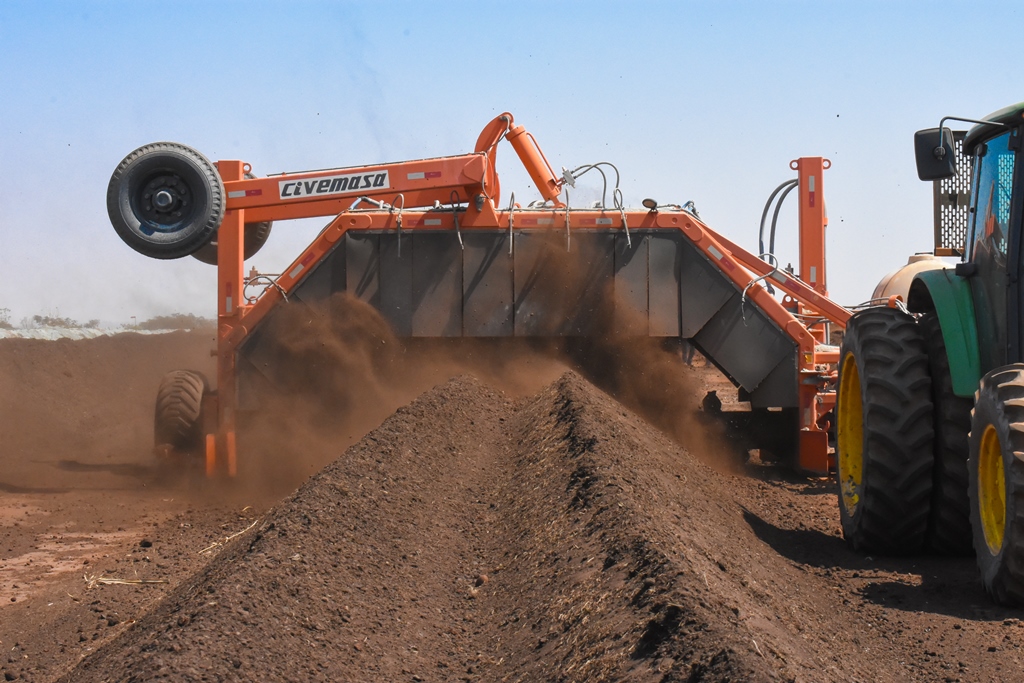
In addition to the rotor and its entire drive, the Civemasa CRO 5.0 composter has some important accessories, such as a biocatalyst deposit, placed on the side of the chassis and used to apply inoculant. This inoculant is used to speed up the composting process, reducing it from months to around 40 to 60 days. This deposit is connected via pipes to a set of spray nozzles placed on the front of the gantry. In addition to this inoculant distribution system tank, other accessories can be connected, such as, for example, a fire truck, which can be used to wet the windrow material through water connections and nozzles placed in the center of the gantry.
Positioned on the center line of the equipment, therefore, the windrow, the CRO 5.0 project provided for the placement of a furrower, in the form of a double mouldboard, which serves to form a furrow in the upper part of the windrow and apply water or other products of interest to the windrow. material.
Because it is agricultural equipment, very special care was taken by the project team to develop a machine in full compliance with the NR-12 Regulatory Standard of the Ministry of Labor and Social Security. There are several items that have been adapted for the total safety of operators and auxiliary workers. A complete protection system against thrown stones or lumpy material provided for the placement of synthetic tarpaulins and a line of chains at the rear of the machine. For this purpose, laminated rubber belt deflectors were arranged, with 12 plies, and behind them the line of chains. To avoid being thrown towards the front of the equipment, which is rarer to happen, a wall of rubber sheets with three canvases was placed.
A ball coupling was designed on the header to assist in the pivot movement at this point, when lifting the machine and placing it in transport position. Also, as required, a safety chain was placed to contain the boom in a situation of involuntary disengagement.
As limits for the equipment's working range, deflector plates were placed in front and behind the gantry, which scrape and centralize the material that has moved away from the windrow, both with position adjustment.

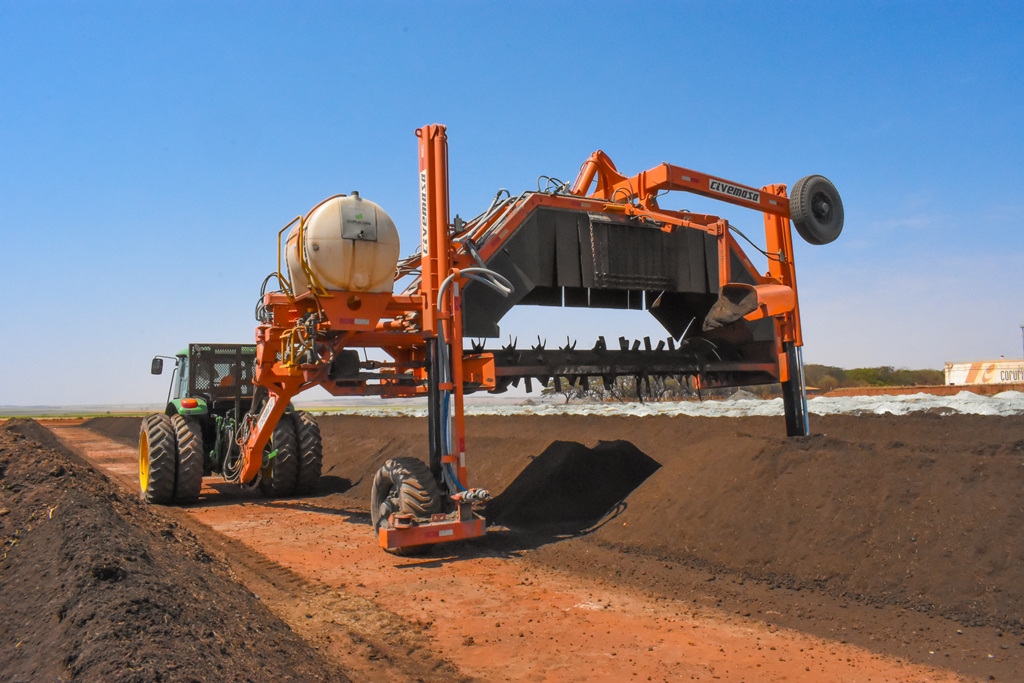
The hydraulic system used to drive the machine is quite creative and economical in demand. Only two remote control valves (VCRs) are needed for the entire movement. One is used to lift the equipment using the vertical cylinders and the other to level the header. With the use of a key placed inside the tractor cabin, they can perform functions of moving the “wheelset” and placing it in the transport position.
The team that developed the composter project was concerned with reducing the need for maintenance, placing polymer gloves at various points. However, there are some grease pins that are used more to remove materials that come between the surface.
During the test we carried out, the CRO 5.0 composter was driven over a windrow of waste at a travel speed of 200m/h to 300m/h, which requires the tractor to have a super-reducer or creeper that provides these reduced speeds. While the tractor moves at this rate, the power take-off (TDP) activates a set of cardan shafts that promote a rotor speed between 320rpm and 330rpm.
We saw that the rotor drive via the TDP passes through cardan shafts and reaches a reducer with a sintered disc clutch, the same ones used in brushcutters. Furthermore, for the safety of the component, it has a fuse pin, which constitutes a redundancy in the operational safety of the equipment.
The tractor that powered the equipment was a John Deere model 6115J, originally with 115 hp at 2.300 rpm, with fuel injection reprogramming, equipped with a PowrQuad transmission with 16 forward and reverse speeds, with super-reducer, which is an option offered by the brand for this model. It is important to highlight that Civemasa's CRO 5.0 composter requires between 125hp and 160hp from the tractor. During the test we saw in operation how easily the operator can change the height of the rotor to the ground and the three basic actions it performs. Because the rotor was designed with three different sections, the blades and blades that are attached to it perform different functions. The first, of the two outermost sections, does the job of reducing the size of the windrow, bringing the material from the edge to the center. The middle part does the work of lifting the material, aerating it and mixing it.
The professionals from Marchesan and Civemasa, Luis Fernando Varella, Marketing coordinator at Marchesan, and Luiz Carlos Datorre, Product Engineering supervisor for the Segment, were accompanying us during the test and clarifying doubts about the equipment, in addition to its applications. Canavieiro, and Alexandre Luiz Ferreira, Product Marketing coordinator at Civemasa.
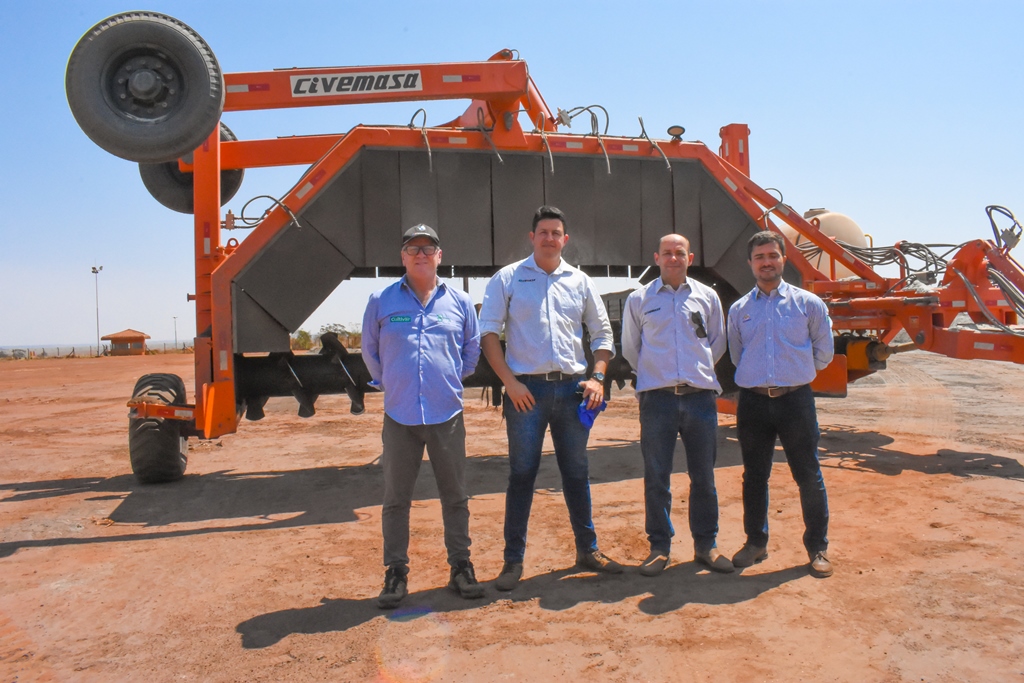
José Fernando Schlosser
Daniela Herzog and
Henrique Eguilhor Rodrigues,
Agrotechnology Laboratory – Agricultural Machinery Testing Center – UFSM

Receive the latest agriculture news by email